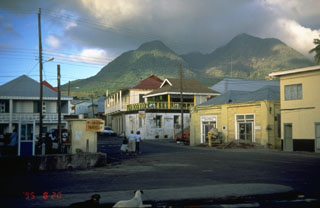Report on Soufriere Hills (United Kingdom) — 22 December-28 December 2010
Smithsonian Institution / US Geological Survey
Weekly Volcanic Activity Report, 22 December-28 December 2010
Managing Editor: Sally Sennert.
Please cite this report as:
Global Volcanism Program, 2010. Report on Soufriere Hills (United Kingdom) (Sennert, S, ed.). Weekly Volcanic Activity Report, 22 December-28 December 2010. Smithsonian Institution and US Geological Survey.
Soufriere Hills
United Kingdom
16.72°N, 62.18°W; summit elev. 915 m
All times are local (unless otherwise noted)
MVO reported that during 17-24 December activity from the Soufrière Hills lava dome was at a low level. A small pyroclastic flow traveled 1.5 km down the Gages valley to the W on 19 December. The Hazard Level remained at 3.
Geological Summary. The complex, dominantly andesitic Soufrière Hills volcano occupies the southern half of the island of Montserrat. The summit area consists primarily of a series of lava domes emplaced along an ESE-trending zone. The volcano is flanked by Pleistocene complexes to the north and south. English's Crater, a 1-km-wide crater breached widely to the east by edifice collapse, was formed about 2000 years ago as a result of the youngest of several collapse events producing submarine debris-avalanche deposits. Block-and-ash flow and surge deposits associated with dome growth predominate in flank deposits, including those from an eruption that likely preceded the 1632 CE settlement of the island, allowing cultivation on recently devegetated land to near the summit. Non-eruptive seismic swarms occurred at 30-year intervals in the 20th century, but no historical eruptions were recorded until 1995. Long-term small-to-moderate ash eruptions beginning in that year were later accompanied by lava-dome growth and pyroclastic flows that forced evacuation of the southern half of the island and ultimately destroyed the capital city of Plymouth, causing major social and economic disruption.

